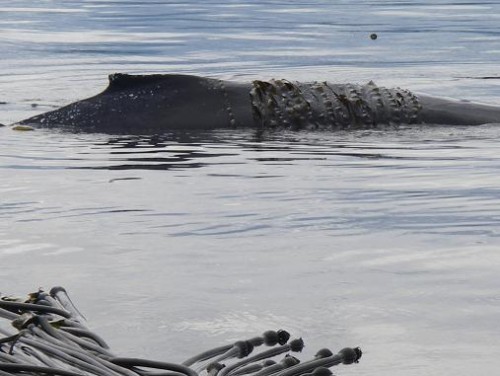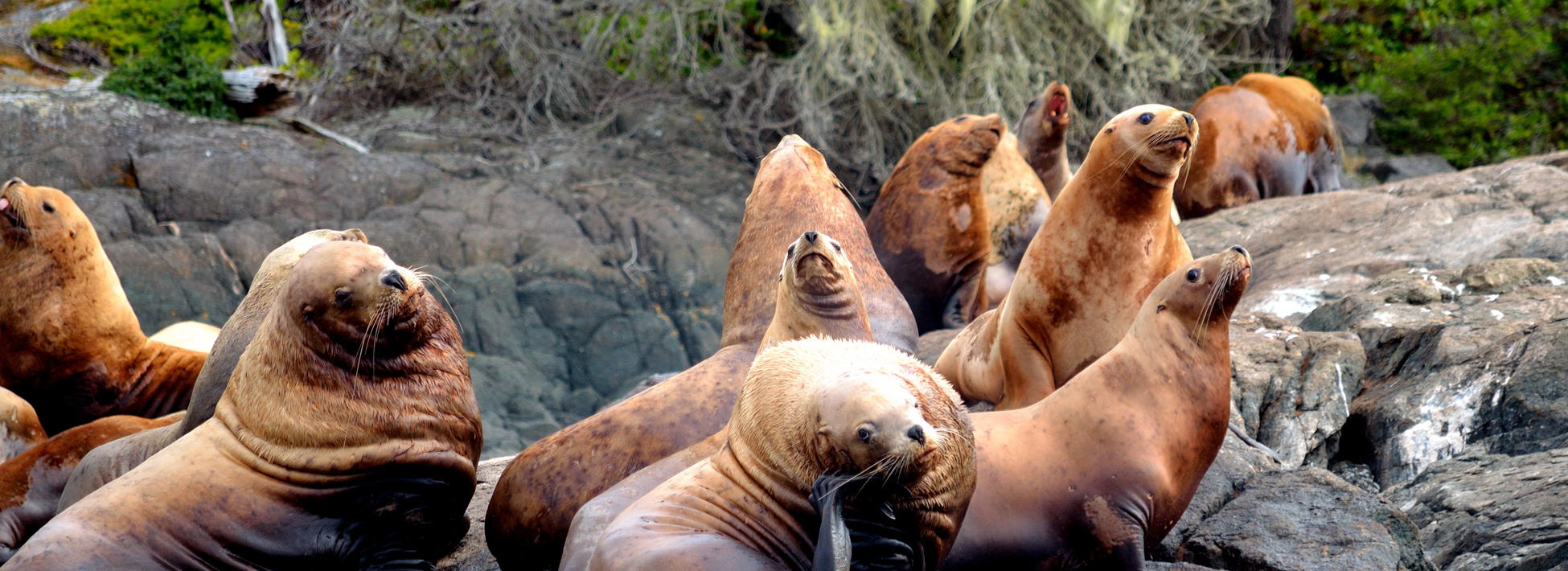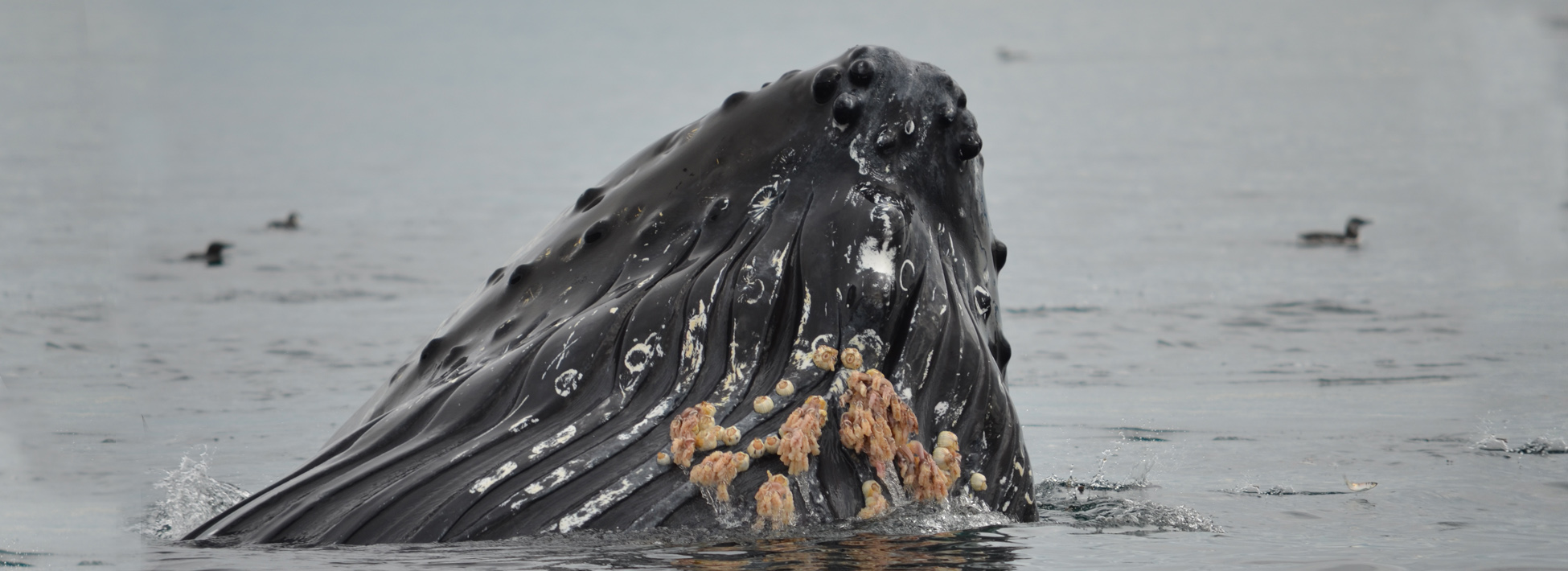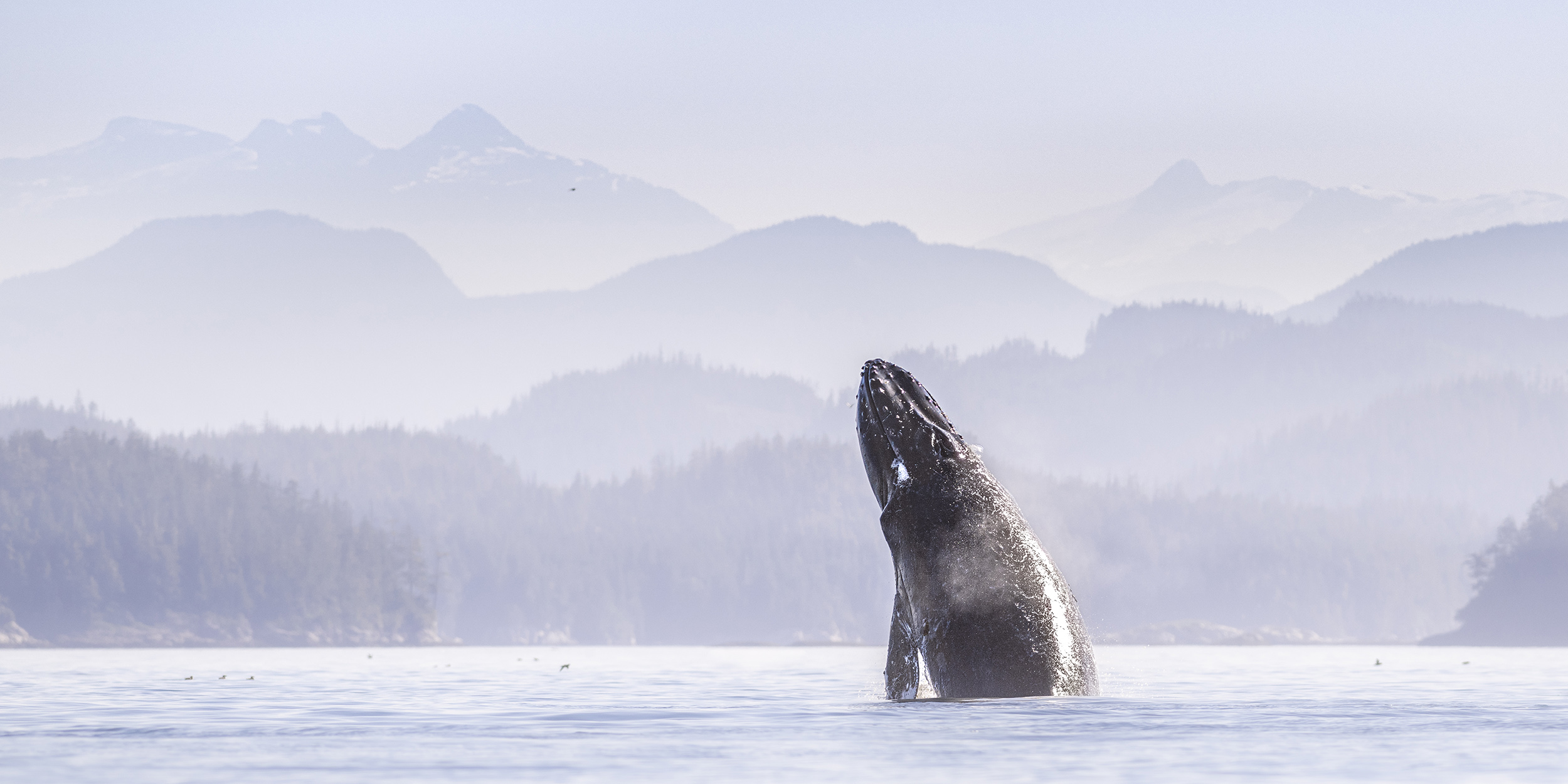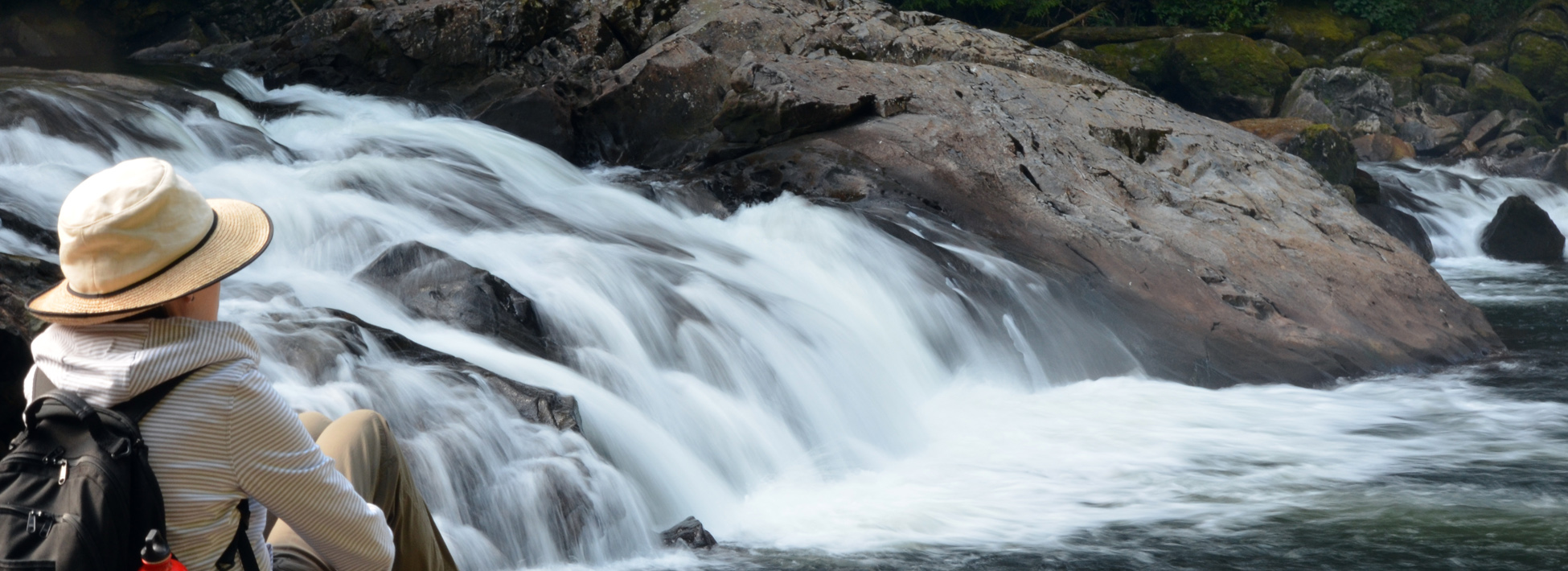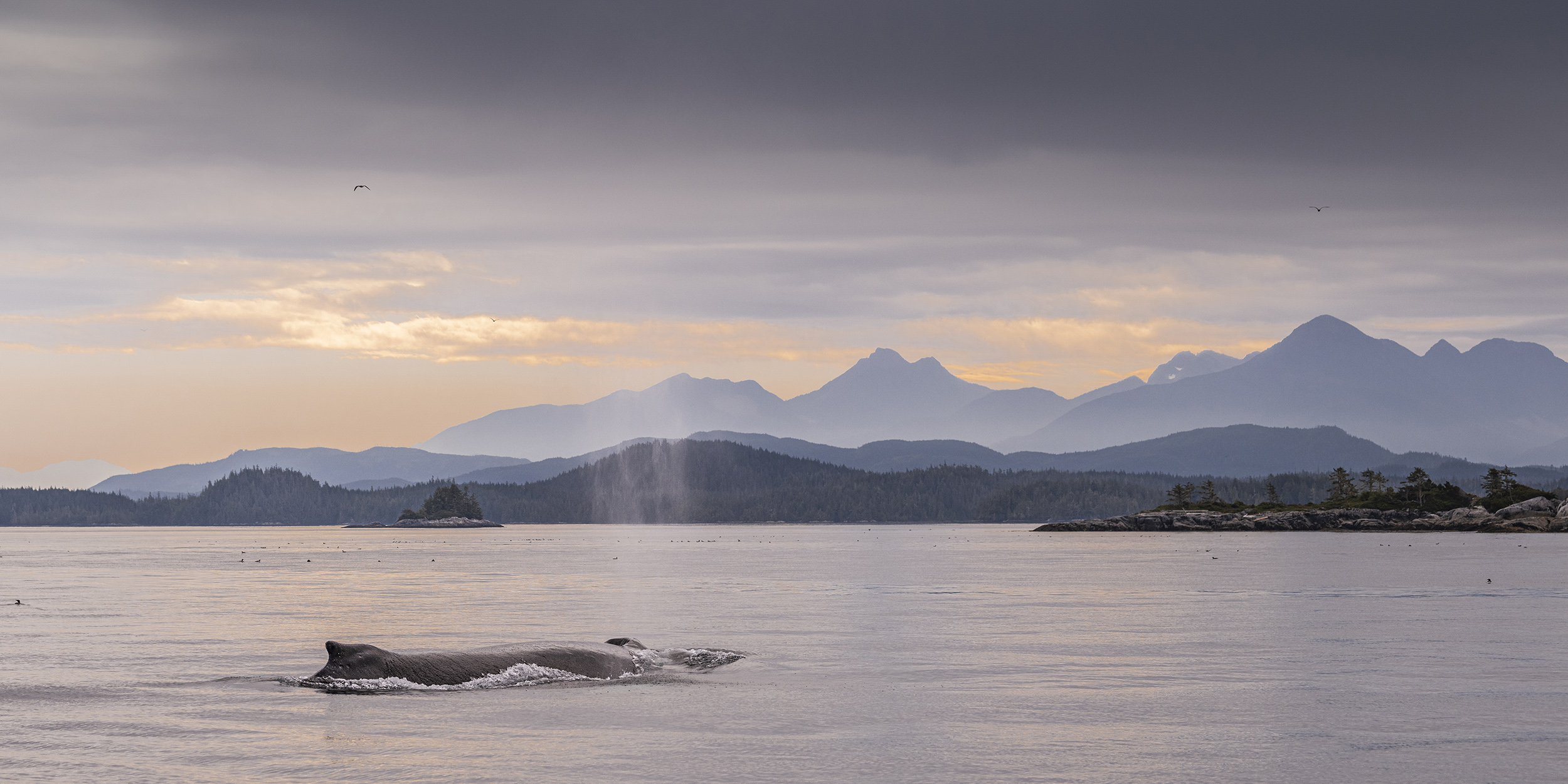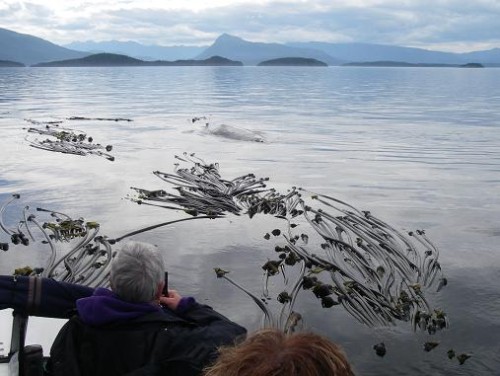
Picnic lunches while whale watching normally are in the boat. The location of the lunches vary from day to day but often involve being tied to a kelp bed. The first photo provides some perspective as to the closeness of the humpback whale while the second shows that the whale was just enjoying a roll in the kelp bed. On this day we were about half way through our lunch as as you can see there not much boat traffic. With our engine turned off it was a very peaceful area and the whale was just doing what whales do when there is no one to disturb it’s natural behaviour.
